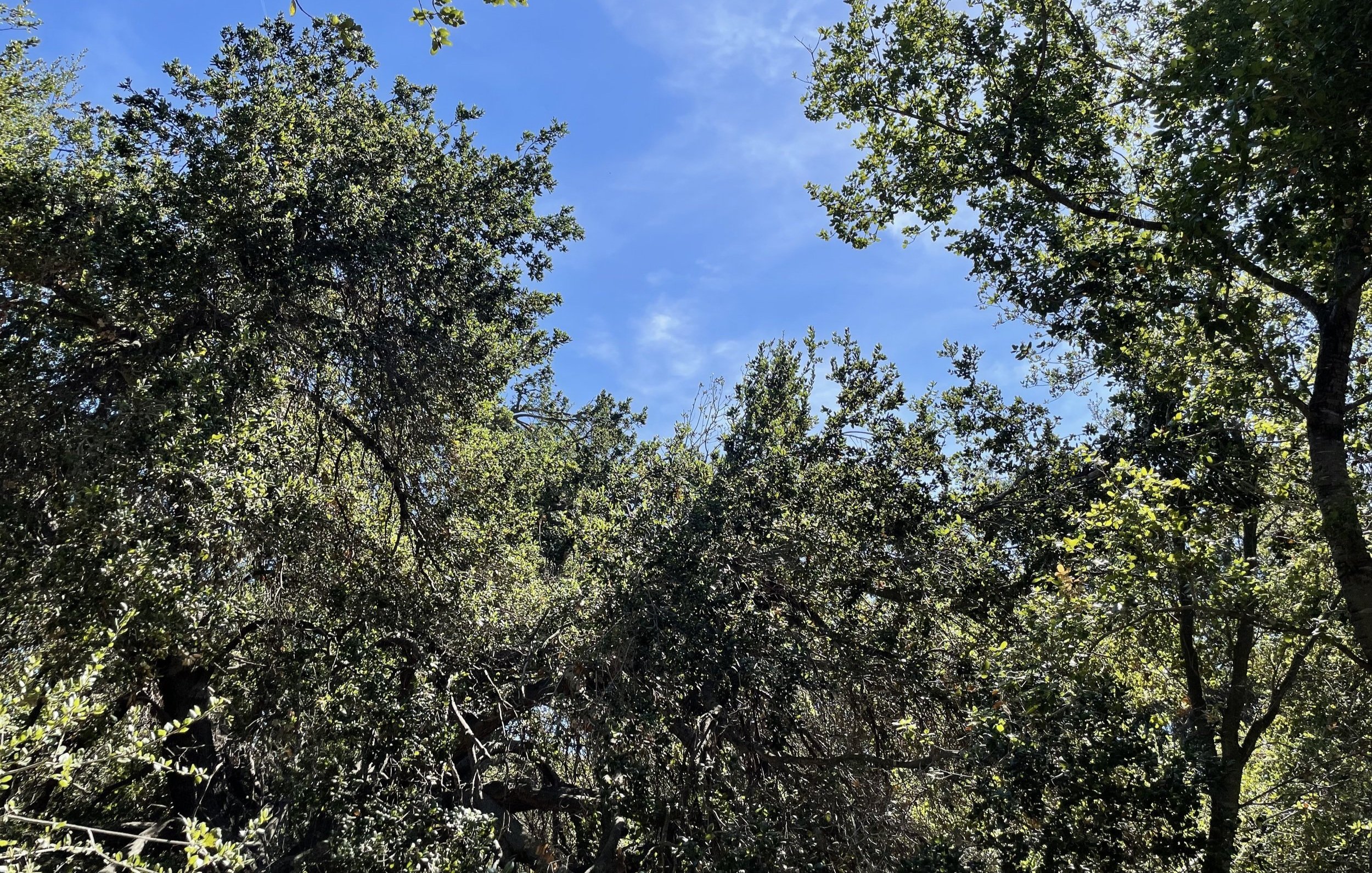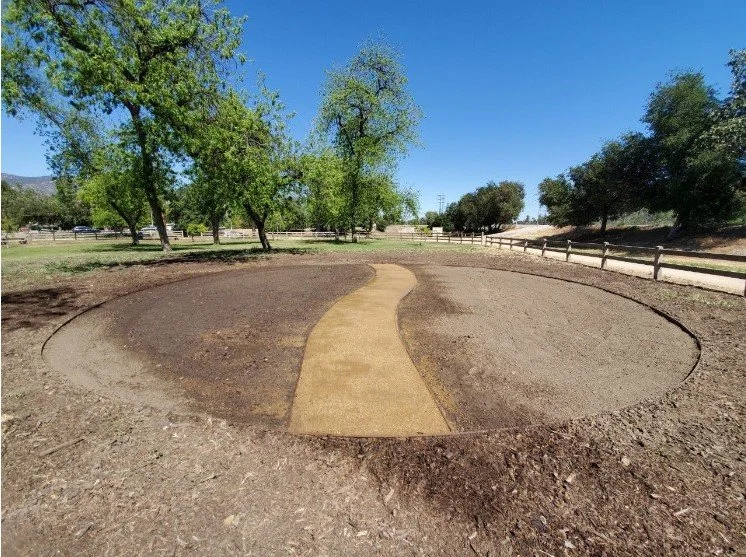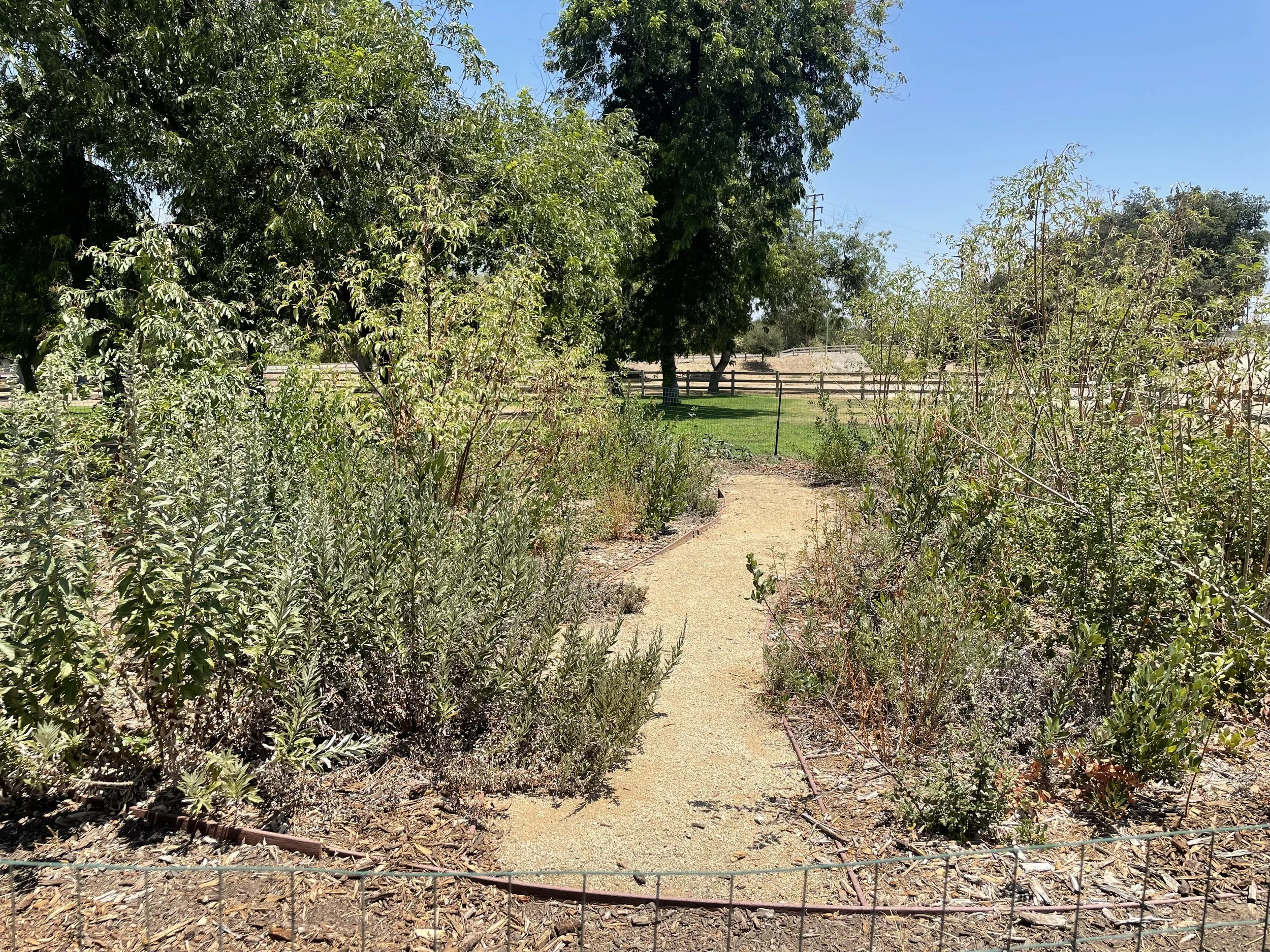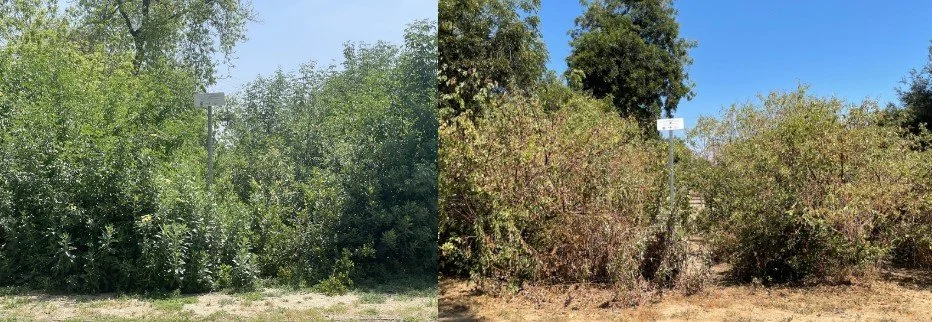
CASE STUDY: Bette Davis Micro Forest
This project was the first attempt at modifying the Miyawaki Method of afforestation for the climate and plant palette of coastal southern California.
QUICK PROJECT STATS:
Location: Bette Davis Picnic Area, Griffith Park
Planted: June 2021
Sponsors: Hancock Park Garden Club
Project Managers: LA Parks Foundation in partnership with LA Parks
Designer: Seed to Landscape
Square Footage: 1000
Number of plants: 145
Species list: Quercus agrifolia, Sambucus mexicana, Juglans californica (removed from design at request of neighbors due to toxicity to horses), Umbellularia californica, Heteromeles arbutifolia, Rhus integrifolia, Frangula californica, Rhamnus ilicifolia ssp. ilicifolia, Rosa californica, Ribes speciosum, Artemisia douglasiana, Keckiella cordifolia, Symphoricarpus mollis
SITE CONDITIONS:
Flat ground
Full sun
River adjacent, but disconnected from river water
No artificial irrigation
Bridle trail nearby with added dust and compaction
THE FOREST THROUGHOUT THE SEASONS:
Prior to planting. May 2021
One month old. July 2021
Three months old. September 2021
One year old. June 2022
Summer-time condition. August 2022. Elderberries, hearleaf keckiella, and other species exhibiting leaf drop and browning to conserve water.
Greener condition, post-rains. March 2023. Species which were dormant in the summer are leafed out and green again.
28 months. October 2023. Mid-summer thunderstorm kept the forest atypically hydrated this year.
Almost three years old (34 months). April 2024. Vegetation has completely engulfed the center pathway.
Summer-time condition. 38 months old. August 2024. Strong evidence of drought-stress. Some evidence of plant loss and leaf scorch from late summer heat waves.
KEY OBSERVATIONS/ LESSONS LEARNED:
Immediate habitat benefit: The forest attracted numerous species of insects, lizards, birds, and small mammals within the first year. Insects and western fence lizards were observed to have used the forest for both food and nesting within 6 months of establishment. Western toads from the nearby LA River also migrated into the forest in the first year, taking up residence in the burrows of ground squirrels.
Fast fill: Full ground coverage was attained within one year. The fastest species to gain dominance was Mexican elderberry (Sambucus mexicana) and mugwort (Artemisia douglasiana).
Some natural seedling recruitment: Mugwort (Artemisia douglasiana), heartleaf keckiella (Keckiella cordifolia), and CA coffeeberry (Frangula californica) were observed to have seeded naturally at the forest’s perimeter.
Excessive summer dormancy: The forest takes on a highly dormant appearance in the summer, especially due to the high numbers of elderberry trees in the installation. The original design called for an equal number of elderberry and southern California black walnut trees, but the walnut trees were eliminated from the design prior to installation due to neighbors’ concern over toxicity to horses. As such, elderberry is the dominant faster-growing tree, whose summer-dormant appearance is not balanced with the walnut’s summer green appearance. Future designs will reduce the presence of elderberries and emphasize more evergreen species.
Walking path: The pathway was completely engulfed and required selective pruning to expose it. To reduce maintenance needs, future pathways should be designed wider to accommodate for the natural spilling over of the plants.














